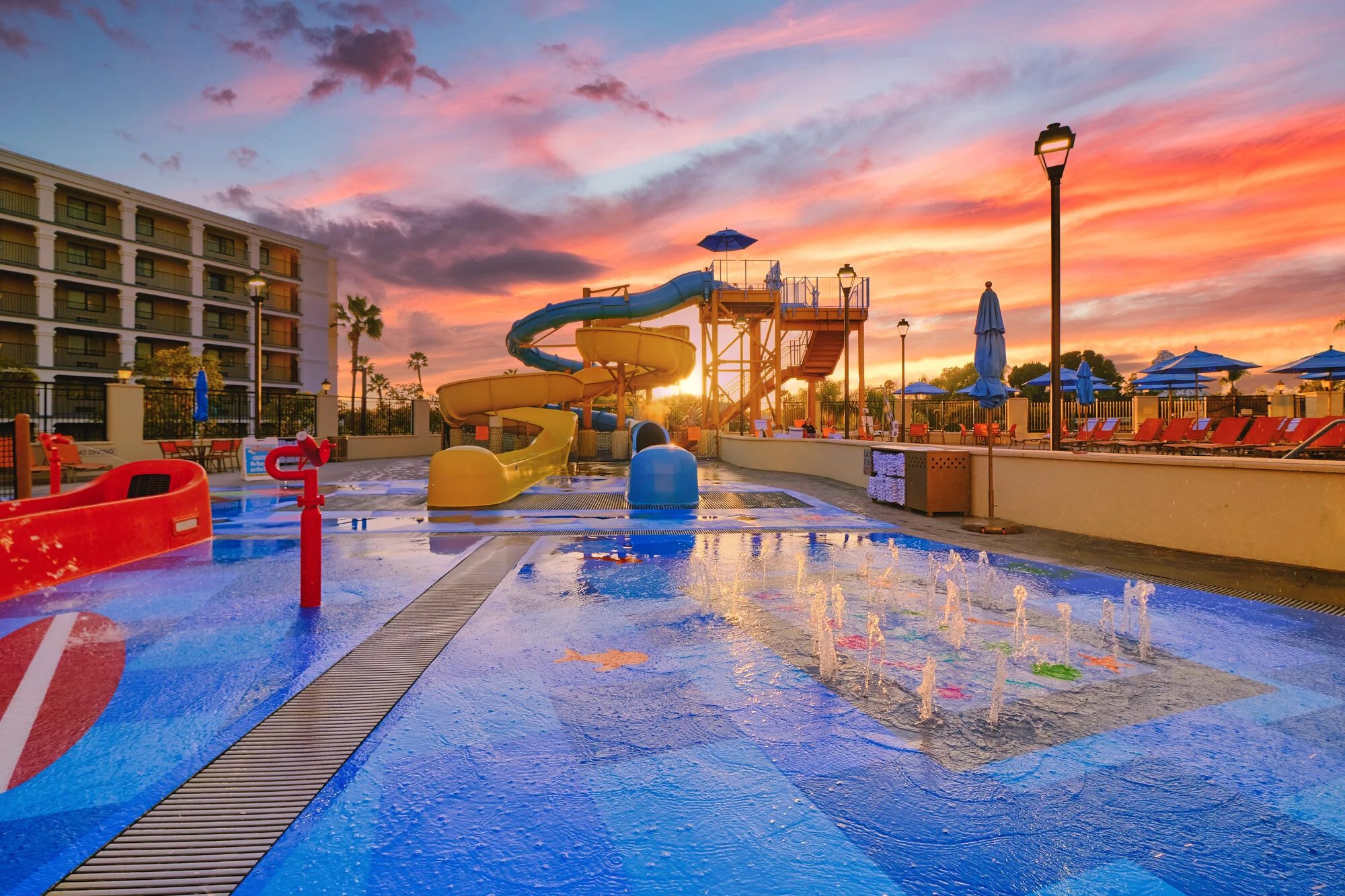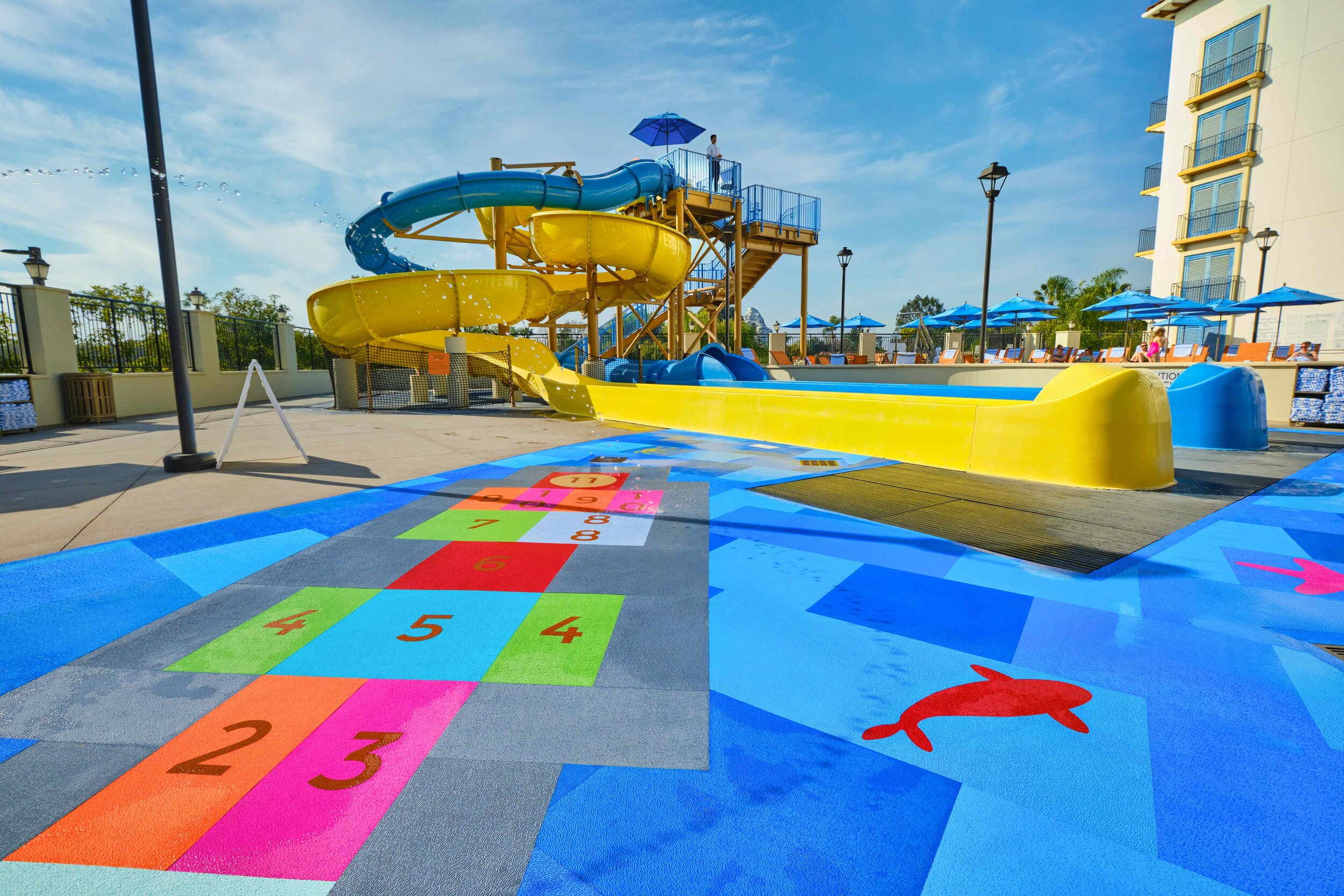Thanks for coming back to week three of our National Water Safety Month series on issues and topics prominent in the aquatics industry! In case you missed it, be sure to check out our previous post about how important it is to reduce slip and fall injuries within aquatic environments. This week our focus is on how accessibility enables a greater and safer way to play.
Creating accessibility in built environments levels the playing field, enabling everyone to interact and explore on their own terms. Today, communities increasingly strive to create inclusive recreation areas that are inviting to guests of all ages and abilities. These facilities attract and encourage a safer and more accessible play experience by using a variety of features and paying attention to certain design elements like spacing, color, size, and flow. This emphasis to provide interactive, social, and active play opportunities for all should also be applied to aquatic facilities, whenever possible. When accessibility is inherent in a facility’s design, even more guests are able to perceive, understand, navigate, and interact with features, leading to a more robust play experience.
With our slip-resistant and cushioned tiles, Life Floor offers an approach to surfacing that enhances aquatic facilities and splash pads by making them safer and more enjoyable to a larger range of guests. Beyond providing a safety surfacing solution, our tiles can also wrap around coping edges and steps to further improve traction for guests that require more stable footing, thereby reducing risk of injury in these areas. Other surfaces commonly found in aquatic environments, such as concrete or ceramic tile, can lead to a less safe or more inaccessible experience due to lack of traction, cushioning, and/or comfort. Enhancing safety at the surface level makes aquatic facilities more accessible to people of all ages and physical abilities, especially those who may be more prone to injury. As a result, very young children can begin to explore water play, the senior population can engage more safely in activities at their community pools, and guests of all abilities are invited to enjoy splash pads and other aquatic features.
While use of a product like Life Floor can enhance safety and accessibility, other design methods can be used at the surface level to further accommodate a wide range of guests. These techniques can involve visual, textural, and mobility considerations.
Use of color at the ground level within aquatic facilities can provide visual cues to a wider range of patrons. For instance, contrasting colors can help the visually impaired differentiate between different depth or surface changes. These visual color cues can supplement traditional depth markers, which do not take into account those who have limited vision or reading abilities. A contrasting colored band of coping around a pool can help to define where the deck ends and the water begins. Likewise, use of contrasting colors at the edges of steps can signal elevation changes, especially when visually obscured by water. Use of more subtle patterns with less contrast across pool decks can help to avoid confusion for patrons that may have challenges with depth perception. Keeping these techniques in mind can create an environment that inspires confidence for a greater range of guests.
Contrasting color bands at step edges help define elevation changes underwater.
A band of contrasting color and texture indicates where the pool deck ends and the water begins.
A contrast in textures can also provide a way of differentiating between zones and features. Much in the way that tactile paving bumps signal transitions for the visually impaired, such as where the sidewalk meets the street, a similar technique can indicate changes within aquatic environments. Varying textures in this way enables people with sensory preferences or low vision to feel distinct differences when entering new areas of a facility. This equips individuals with an understanding of where they are located as well as possible features in their surroundings. At the moment, Life Floor is offered in two distinct textures that have achieved this approach at facilities where it’s been requested along pool edges. Providing these tactile methods of communication has the ability to increase safety and awareness for guests within aquatic facilities.
Sloped transitions make an elevated pool deck surface accessible to all guests.
Ensuring that these spaces accommodate visitors with mobility challenges further increases accessibility. While pool lifts are commonly used, other design features can enhance the ways that guests are able to interact with aquatic environments. For people who ride wheelchairs, installation of ramps, sloped entrances leading into pools, or transition strips at the edges of raised decks or splash pads can enable access to features that may have otherwise been difficult to enjoy. Surfacing materials that provide traction and a more stable experience for these guests will also enhance their ability to confidently navigate these environments. Attention to spacing of features on splash pads can also improve access to more guests, especially those who ride wheelchairs. Designing with attention to mobility in mind ensures that aquatic recreation may be frequented by a greater diversity of patrons, creating a better experience overall.
We’re happy that Life Floor is able to enhance safety and accessibility at facilities in many of these ways as we love watching people of all ages and abilities come together to enjoy aquatic spaces. Equal opportunity to experience play and joy has always been important to our team and we look forward to continuing to equip facilities with a solution that creates beautiful, safer, and more accessible environments for all.
Interested in learning more about accessible design within aquatic environments? Explore our related blog posts here:
Putting Humane Design Into Perspective
2018 Trends: Accessibility











